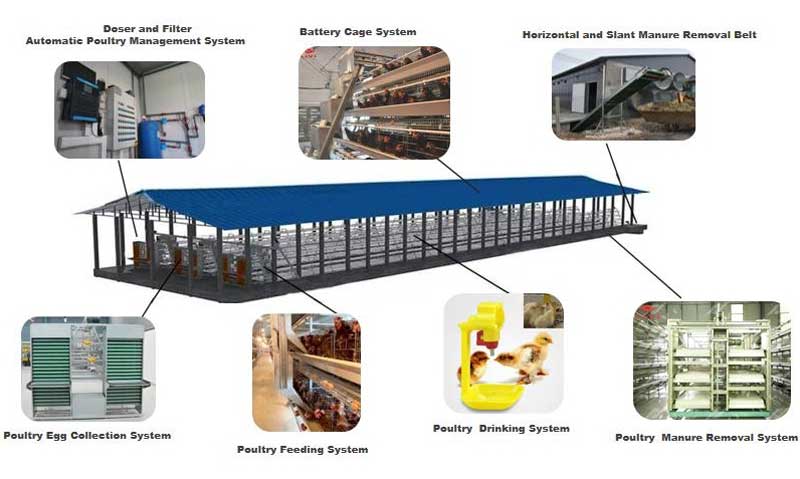Nowadays, laying hens are commonly kept in cages, which provide a relatively healthy and safe production environment for laying hens, thereby increasing the egg production of laying hens. Cages also help reduce the spread of diseases and simplify management. However, the transition of laying hens to cages must be done correctly, as improper handling can have a negative impact on the production capacity of laying hens. So, what aspects do we need to consider when transitioning laying hens to cages? Let’s explore the key points together.
Issues When Transporting Hens Into Battery Cage For Layers
The best age for laying hens to be raised in cages
The suitable age for laying hens to be raised in cages is generally between 13 and 18 weeks old. This age range can ensure that the weight of laying hens is within the normal standard and improve their egg production rate during the breeding process. It should be noted that the cage raising time cannot exceed 20 weeks. However, if the chickens grow well, they can continue to be raised in cages at 60 days old. When raising laying hens in cages, they also need to be grouped and raised in batches according to the different growth rates of laying hens.

Facilities and Equipment
After laying hens are placed in cages, their original growth environment needs to be maintained to avoid adverse effects on growth and production. Before placing them in cages, they need to be equipped with appropriate breeding equipment and various breeding facilities installed. In addition, these facilities and equipment should be thoroughly inspected and replaced to avoid problems in the later breeding process.
Grouping and Caging
When placing laying hens in cages, it must be scientific, not making too much noise, and the movements must be gentle and not too strong. Never scare the chickens, otherwise it will cause an overreaction, which will have a great impact on the growth and production of laying hens. Generally, stressed chickens will have a lower appetite and then gradually weaken, which will seriously affect the health of the chickens. Cage them in groups according to their growth rate, in groups and batches, to ensure uniform development.
Environmental Maintenance
After the laying hens are caged, the original growth environment of the chickens should be maintained to avoid sudden changes in the environment that cause stress reactions. This includes maintaining appropriate temperature, humidity and ventilation conditions, ensuring good air circulation in the chicken house, and minimizing the accumulation of harmful gases.
Health Check
Perform a comprehensive health check on the chickens before entering the cage to detect and deal with any potential health problems, such as disease or malnutrition. Regular health checks help to detect problems early and take corrective measures to ensure the health and productivity of the flock.
Continuous monitoring
Continuous monitoring of chickens after they enter the cage to observe their behavior, feeding, drinking and excretion patterns. Early detection of stress reactions or health problems can timely adjust management measures, such as changing feed formulas or improving the environment, to ensure that chickens adapt to the new environment and maintain high production capacity.
Livi is a poultry cage manufacturer, especially a layer cage manufacturer, specializing in the research and development, production, sales, installation and after-sales service of cages. Our main products are: layer cages (including brooders, laying hens, broilers), automated breeding equipment, cage-free chicken houses, fully automatic egg collection equipment, fully automatic feeding systems, feces cleaning series, farm intelligent environment controllers, and breeding equipment such as fans, water curtains, feces extractors, hot air furnaces, etc.
The cages produced by our company are characterized by reasonable structure, stable performance, and durability. The layer cage adopts hot-dip galvanizing surface treatment technology, and the normal service life of the equipme